January Thaw Walk-About
The weather’s been crazy, to put it mildly. I know most of the country has endured similar: a thaw the week before Christmas, a sudden drop to unseasonably frigid temperatures, and (once everyone’s holiday plans were screwed up) a return to unseasonably warm temperatures.
I was thankful that we didn’t lose our snow cover during the first thaw, so that the plants did have some protection when the temperature dropped to -2°F at night. But with this second, post-Christmas thaw the snow is mostly gone. Monday it almost reached 50°F and it wasn’t raining, so I decided to walk around the garden and check on things.
Anguish: Exposed plant
Plants, especially those planted late in the fall, tend to heave out of the ground with alternating freezes and thaws. I thought I’d encourage any plants “bumping up” to bump back down again. But I never dreamed I’d see this:
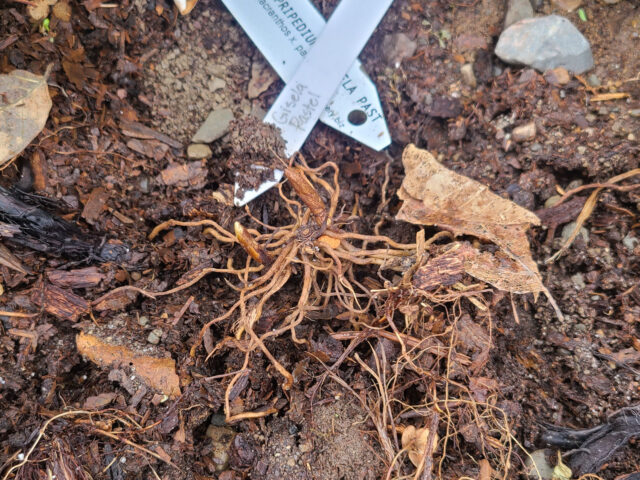
“Do not expose roots to direct sun or drying wind; doing so can be fatal to the plants.” So says the planting guide that came with the terrestial orchid. You can be sure that I had followed planting instructions to the letter: buds 1/2 inch below the surface, an inch of mulch over that, roots spread horizontally in the top four inches of soil. What I didn’t do is cover the newly planted lady’s slipper with a foot-square board or piece of plastic, as was recommended. I did place a chicken wire cloche over the planting site to deter animal digging.
I don’t know if heavy rains washed the soil away or if some animal had gotten under the wire cage to make mischief. The site really didn’t look disturbed. I immediately got a small tub trug full of leaf mold, dumped it over the roots, and patted it down gently with my hands.
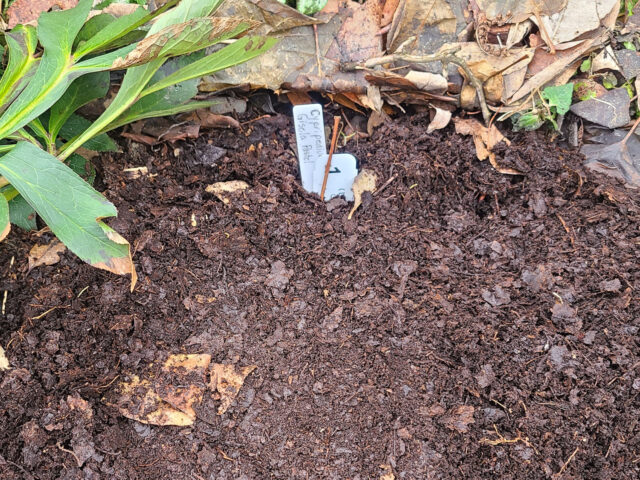
Then I replaced the wire cage.
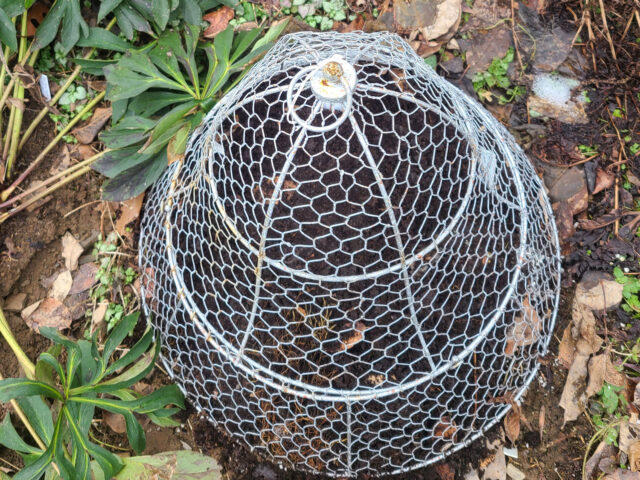
It wasn’t until I started writing this post that I reread that bit about covering it with a piece of wood. I think I will hunt a scrap down before the thaw is over. The wood is supposed to keep the roots from getting too wet. On the other hand, the lady’s slipper should never dry out. And this hybrid is supposed to be one of the easy ones!
Why am I even trying? For one thing, I’ve seen Cypripedium acaule (one of the more difficult ones) growing nearby, less than half a mile away, just further down our road. It doesn’t seem unreasonable to think an easier lady’s slipper might thrive here. Also, I’m not getting any younger. I mean, if I wait “until I’m a better gardener” I might be dead first. You might say it’s been on my bucket list. Also, guess how you turn into a better gardener? By trying to grow plants you’ve never grown before.
But I have to say, I never expected to turn the corner and discover the most expensive plant I’ve ever planted in my life completely barerooted with no discernible cause.
Bliss: Weeding in January
Moving down the bed from the beleaguered lady’s slipper, I discovered patches of chickweed.
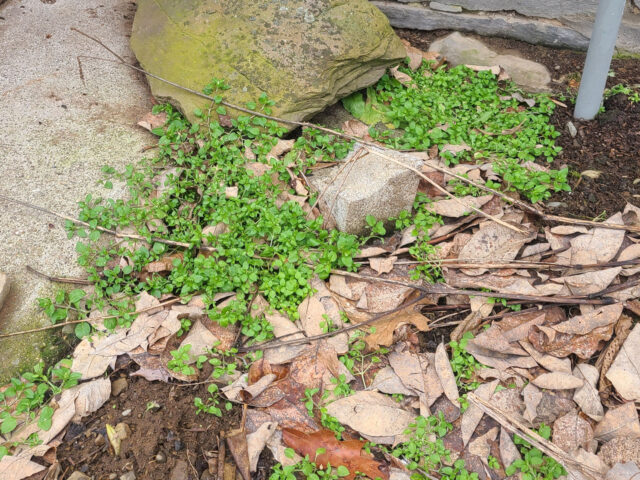
Chickweed (Stellaria media) easily germinates at temperatures between 53°F (12°C) and 68°F (20°C), but even manages at 36°F (2°C), and it survives 14°F (-10°C) just fine. Considering the insulating effect of snow and chickweed’s tolerance of low light, it’s perfectly capable of growing under the snow. I just couldn’t resist pulling it since I was right there and had an empty tub at hand.
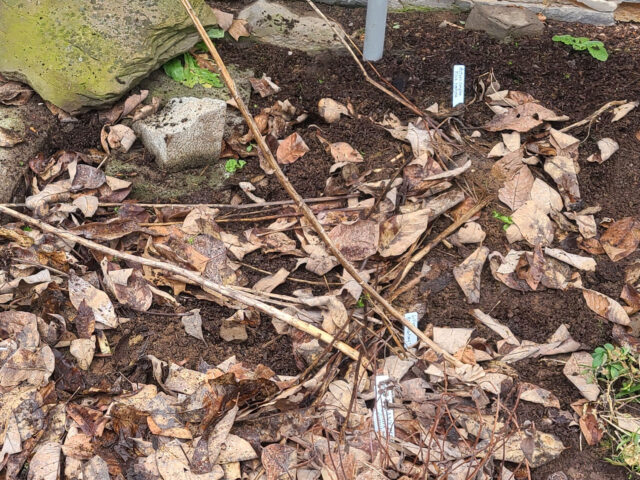
The stems pulled easily but most of the roots got left behind. It’s possible they were still embedded in frozen soil at their very tips. I would have made a better job of it if I had gone back to the shed and gotten my gardening knife (aka hori-hori), but for Pete’s sake, this was supposed to be a quick walk around the garden and I had things to do indoors. (Rule number one: always take your hand pruners and your gardening knife before going anywhere in the garden. And your [phone] camera.)
Nevertheless, it wasn’t long before I filled my bucket. There’s a reason it’s called chickweed: chickens love it. At least, chickens on winter rations love it, and our chickens were very happy to have me dump my pickings over the fence into their yard.
Hope: Signs of Spring
It lifted my spirits to be weeding in January. It was dark; it was damp; it was delightful! It put me in such an optimistic frame of mind, I decided to look for signs of spring.
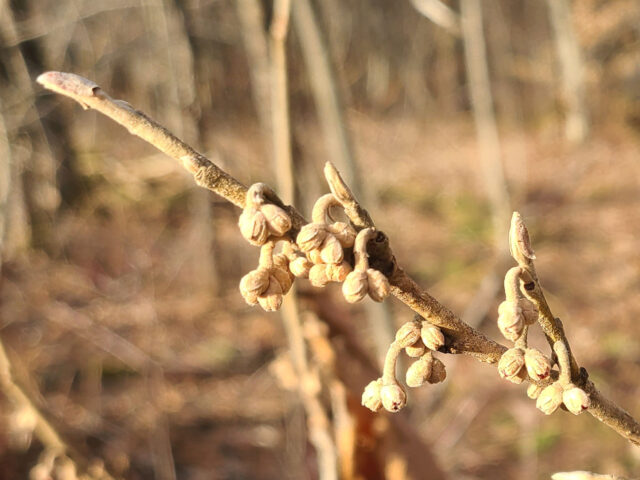
Vernal witch hazel (Hamamelis vernalis) blooms earlier than any of the hybrid spring-blooming witch hazels (Hamamelis x intermedia) I’ve planted. It’s native to the southern and central parts of North America, and considered hardy to USDA Zone 4. I’m going to try more cultivars of this shrub, because it’s wonderful to have something in bloom before the snowdrops.
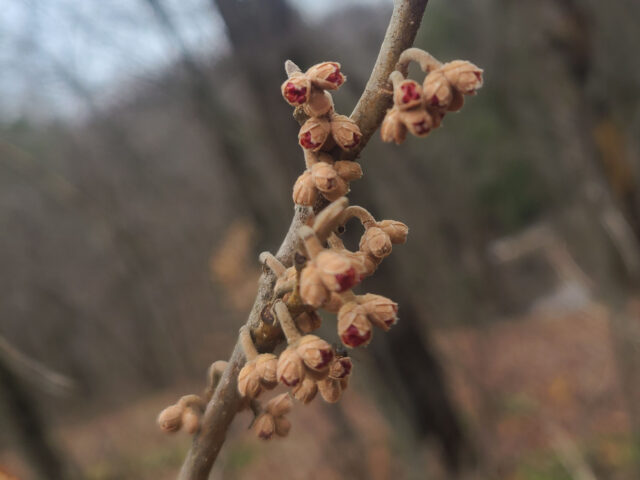
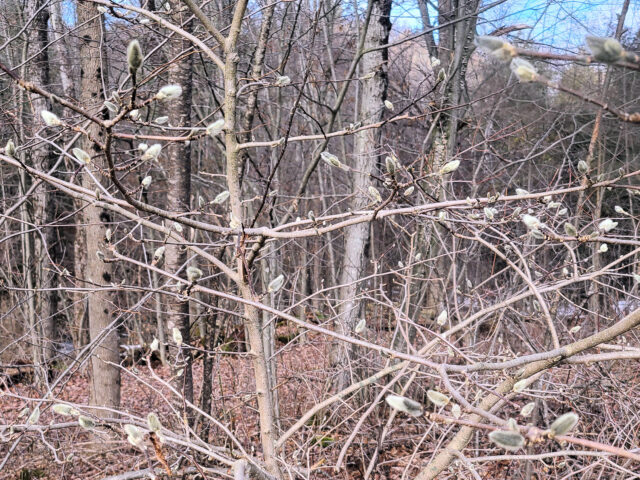
I have several star magnolias (Magnolia stellata), all seedlings given to me by my next-door neighbor. At the time, I thought it was a native magnolia, and I planted all of them in woody edges abutting the lawn or fields. (It’s actually native to Japan.) The magnolia above was by far the biggest when I got it; the others are across the creek and struggling.
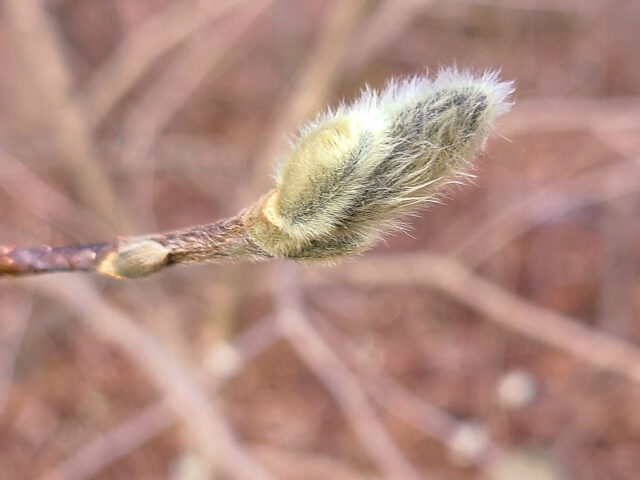
While the tree itself is hardy to USDA Zone 4, the buds can get blasted by a sudden cold spell. Last year it didn’t bloom at all and many other woody plants showed damage. When it does bloom, it’s in early May.
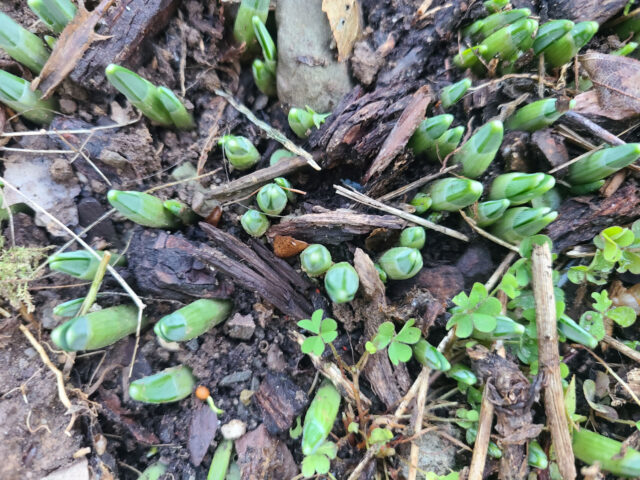
I’ve said it before and I’ll say it again: plant your earliest blooming bulbs where the snow melts first. Most of my snowdrops have not emerged, but these, in the warmest microclimate, are raring to go. They had actually started to emerge in the first half of December before getting snowed under.

I see these ornamental kales from my front door. As long as the snow has melted, I get this blast of color. Fall mums have turned to mush, pansies may live but struggle to bloom, but the ornamental kale will continue to provide color well into winter. Eventually the onslaught of bitter cold, snow, and ice (especially) will cause them to brown and tatter, but in my cold climate they provide interest and pleasure far longer than any other traditional autumn outdoor plant.
Previous winter walk-abouts
Walking around the garden during a thaw: it’s a thing I’ve done many times before.






